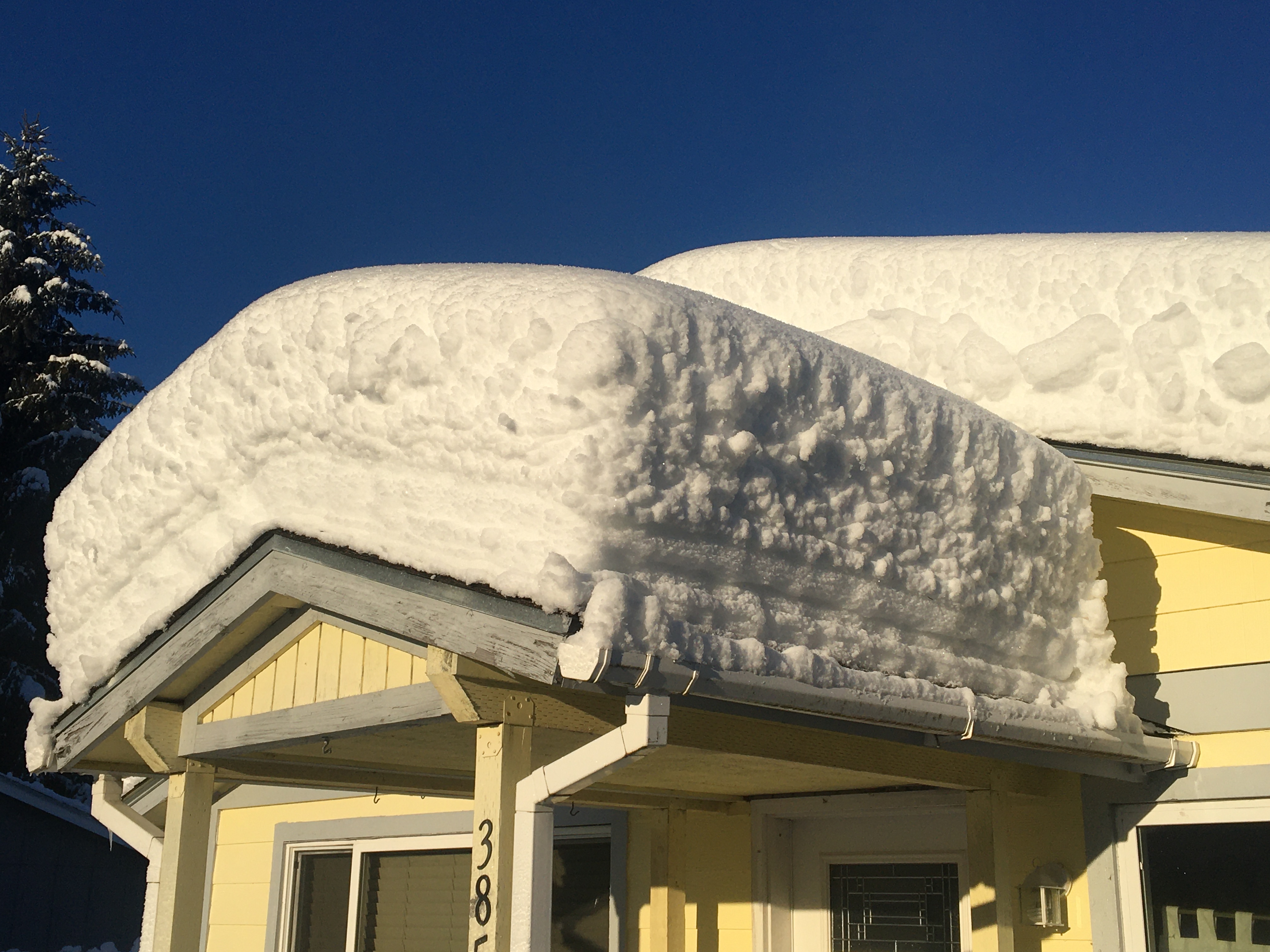
Information on roof snow loads
Due to the ongoing inclement weather, City and Borough of Juneau staff members have been fielding many questions on whether current snow conditions warrant the removal of snow from roofs. Although CBJ does not make borough-wide recommendations on when to remove snow from roofs, the Roof Snow Loads information sheet is a good source of information to learn more about factors, codes, load and dangers.
Each individual building, building location, and part of building has slightly different conditions that may be totally different from its next-door neighbor. It is up to the individual property owner to consider the benefits and dangers of snow removal and decide their own course of action.
According to engineering firm RESPEC, here are general guidelines for what to look for when the snow starts to pile up:
- Consider shoveling your roof after the snow gets to 2’-6” to 3’-0” of accumulation so that the next time it snows you don’t get in trouble. Be aware there are additional factors for safety built into building designs, so your roof is not likely to collapse when the snow hits three feet.
- If you have an older home, you might want to consider clearing it at about 2’-0” to 2’-6”. This corresponds to the 40psf design standard (pre 1991).
- Check that any areas where drifting snow might accumulate have adequate structure. This might be trusses or joists that are spaced closer together than in other areas, or larger joists or trusses than in other areas.
- If you have a flat roof consider clearing it at around 2’-0”. While large snow loads might not cause a collapse, they can cause large deflections which can lead to ponding and/or leaks.
- Ice is roughly four times denser than snow, so watch for ice build-up.
Please be aware of the potential dangers of shoveling or raking snow from a roof. Besides the potential damage to the roofing materials and structure, factors could include sliding off the roof, falling off a ladder, overexerting themselves, or injury from snow sliding on top of them. Consider carefully as you choose the next course of action to take about your roof.
